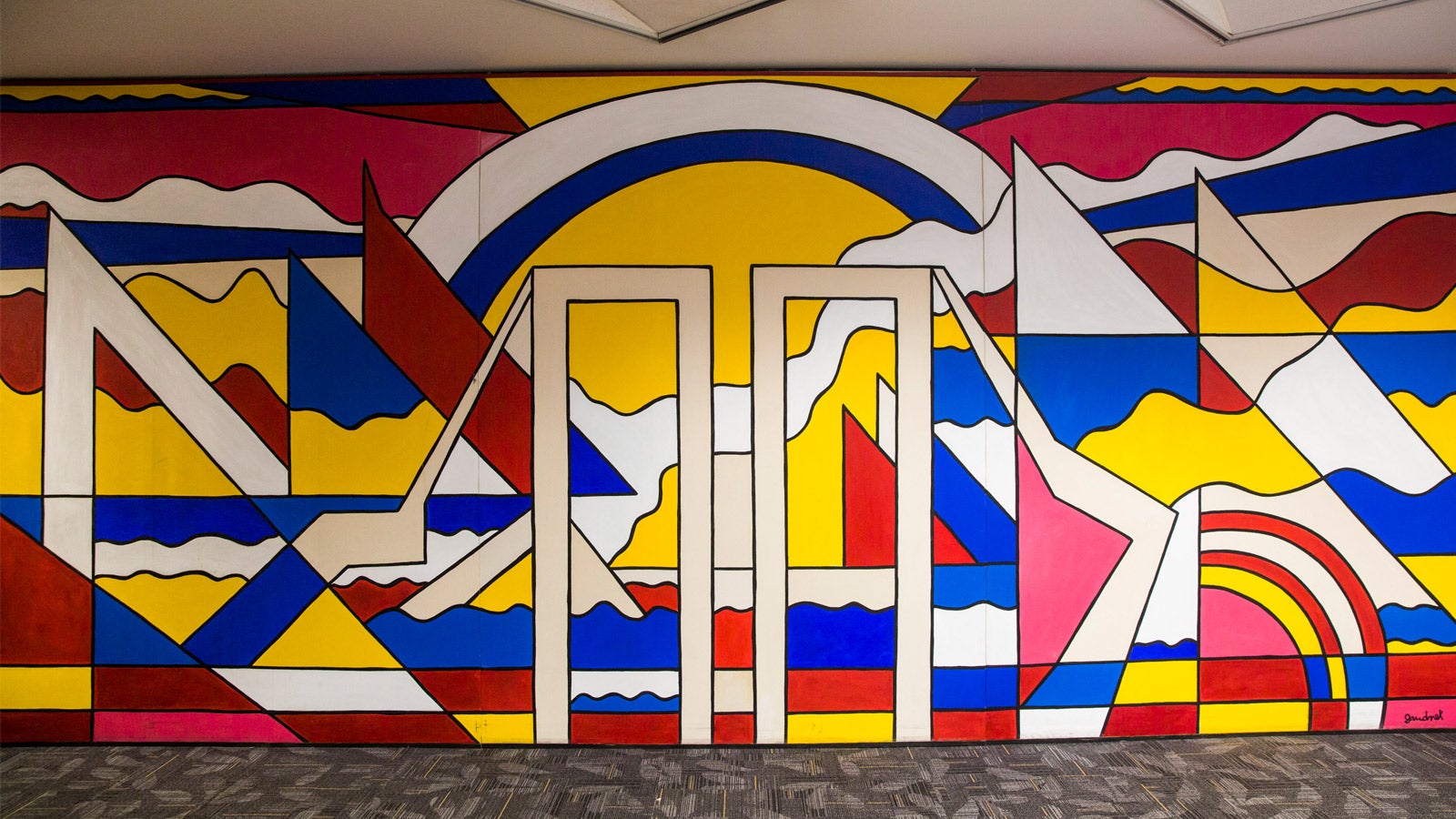
More Than Meets the Eye
Summer 2017 | By Nicole Dudenhoefer
More than 250 pieces of art can be seen throughout UCF’s campus – from paintings hanging in the halls of administrative buildings to large sculptures adorning the lawns between classrooms. While many might stop for a few moment to admire the pieces, there are small groups of faculty and staff who put hundreds of hours into making this artwork available for public access.
When selecting and caring for public art, Kevin Haran, administrator of the UCF Art in State Buildings Program and associate professor of art, says many things must be considered: finding the right location for artwork, determining what type of art is appropriate for a space, following safety regulations for display and determining the level of maintenance needed. Although UCF has one of the largest college campuses in the nation, simply filling space with attractive or interesting things to look at is not the purpose of public art at UCF.
“We have a School of Visual Art and Design that is one of the biggest in the country, so art and design is part of the campus curriculum and culture,” Haran says. “I think any major campus has key, landmark sculpture or landmark artworks that enhance the landscape and the community.”
While there are plenty of beautiful works adorning the campus, ranging from the Trio hanging mobile installation in the Student Union to the dynamic Elliptic Lens piece on the College of Optics & Photonics (CREOL) building, Haran says it is a challenge for people to see the collection in its entirety. This is why he is working on developing an interactive tour that will allow users to see UCF’s public art as a unified body, as well as learn about each piece’s history, intent and creator.
Artwork at UCF isn’t confined to the outdoor spaces and the walls of academic building. Hundreds more works are carefully tucked away in the Special Collections and University Archives’ climate-controlled storage room on the fifth floor of the John C. Hitt Library. These pieces are organized into six distinct collections – Africana Americana, Book Arts & Typography, Caribbean West Indies, Floridiana, Travel & Tourism and University Archives, all of which David Benjamin, head of the department, must care for with a small team. In addition to caring for the large collection, Benjamin is working on rotating the art on display in the Libraries and is working with an art history student to curate an exhibit highlighting Haitian art within the Caribbean West Indies collection.
“I think it’s important to expose students to art,” Benjamin says. “I think it stimulates thinking. I just can’t imagine not having art in the library. If you look around, there are art pieces that are just part of the permanent collections that hang in the building, and those are there because art beautifies. Art makes you think. Art, I think it helps you be creative. You see pieces, you think about them. How do you react to them?”
As UCF expands its campus with the addition to the John C. Hitt Library, as well as the new downtown location, so does the opportunities for art to be displayed to the community. Rather than choosing a freestanding structure or a painting to hang on a wall, the UCF Art in State Buildings Program is currently selecting an artist to work with the architect and builders of the new Dr. Phillips Academics Commons for a new piece that will be integrated into the building itself. Benjamin says a new exhibit gallery, part of the library expansion, will allow Special Collections and University Archives to exhibit art in new and innovative ways.
To make an appointment to view the special collections, call 407 – 823 -2576 or stop by room 501 of the John C. Hitt Library.
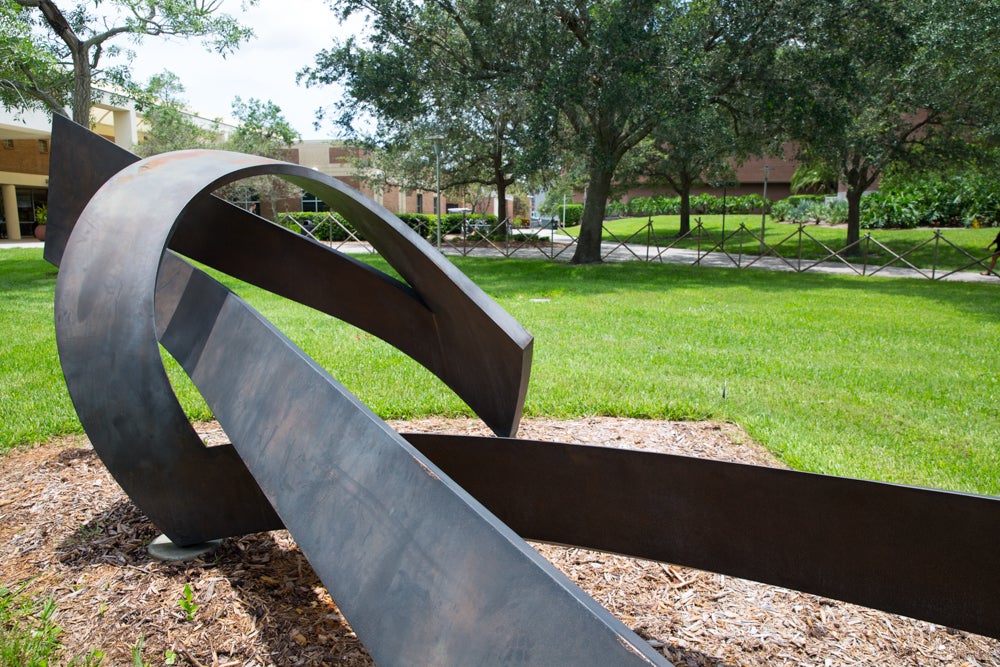
Public art makes its way onto the UCF campus either by an Art in State Buildings Program commission or through a generous donation — the latter of which is how the Alamar found its home on the grounds outside the Barnes and Nobles bookstore. The contemporary Corten steel sculpture is one of over 30 pieces loaned and eventually gifted to the university by George and Norma Kottemann, a couple who spent their life collecting and supporting the arts.
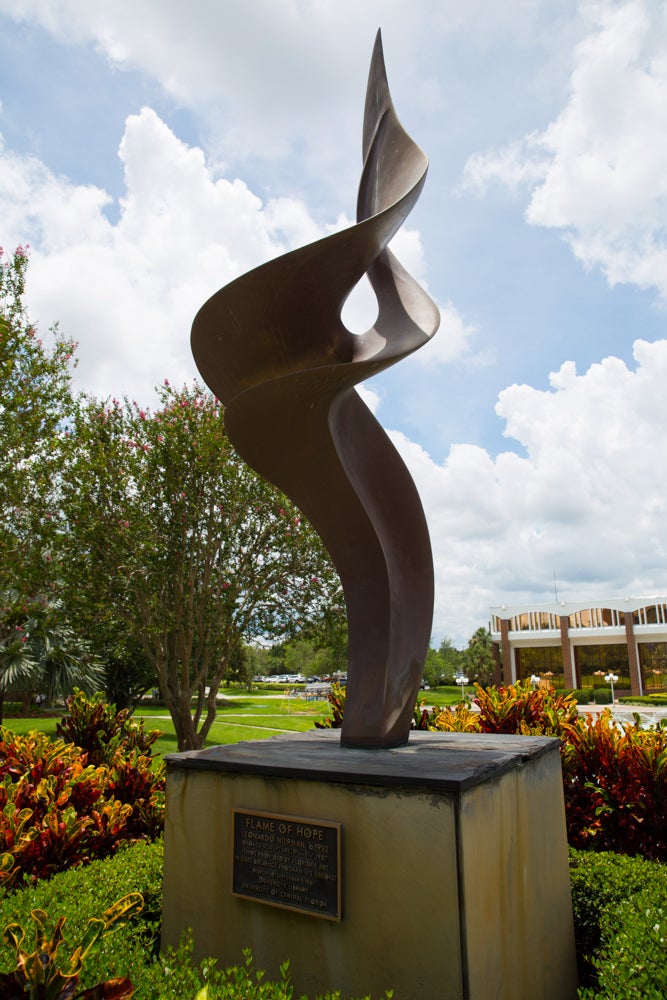
The Flame of Hope, highlighted in front of the main entrance of John C. Hitt Library, is one of UCF Art in State Buildings Program’s top priorities for cleaning and polishing. Maintenance of public art, which can vary from regular upkeep from groundskeepers to extensive cleaning processes that require having the original artist un- and re-install a piece, has been a major focus for Haran since he became chair of the committee in the fall of 2013. UCF’s Special Collections and University Archives also have Nierman paintings in their archives.
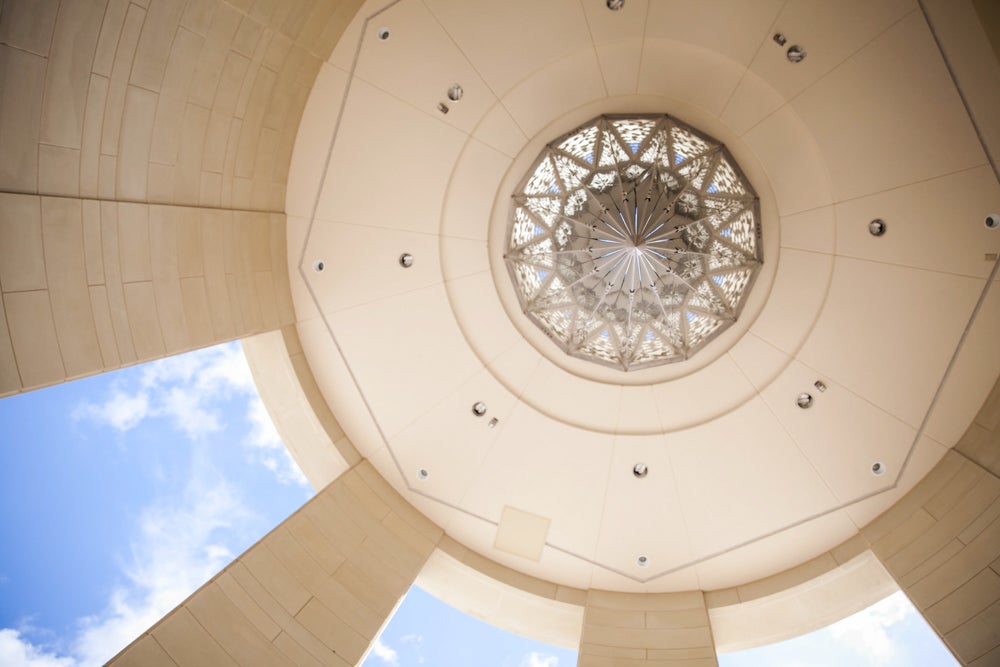
We See the Same Stars, is a newer piece of public art on the UCF campus that was built into the rotunda of the Classroom Building II and ROTC building in 2013. It serves as a symbol of the university’s appreciation for those who have served in the military. The new public art piece UCF is working on for the UCF Downtown campus will follow the We See the Same Stars model of incorporating art into the building design itself.
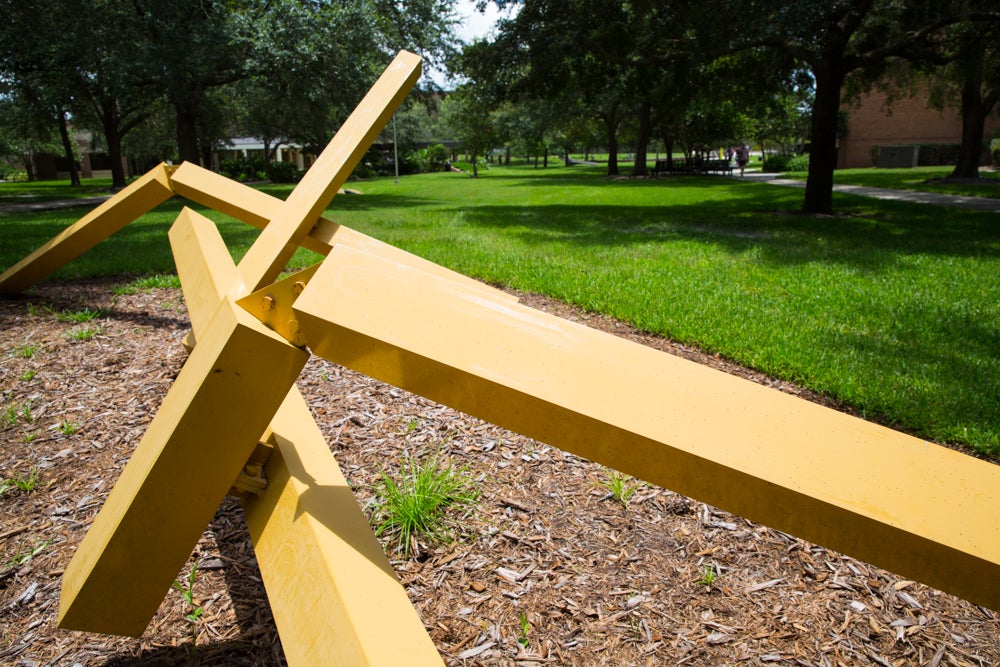
On the grounds between Colbourn Hall and the Education Complex sits the vibrant yellow geometric Sun Target 1. The large-scale aluminum piece created by John Henry changes shape as viewers walk past it and is an exercise in minimalism and abstraction. “John Henry has an international reputation and Sun Target 1 is a fine example of some of the world-class art on campus,” Haran says.
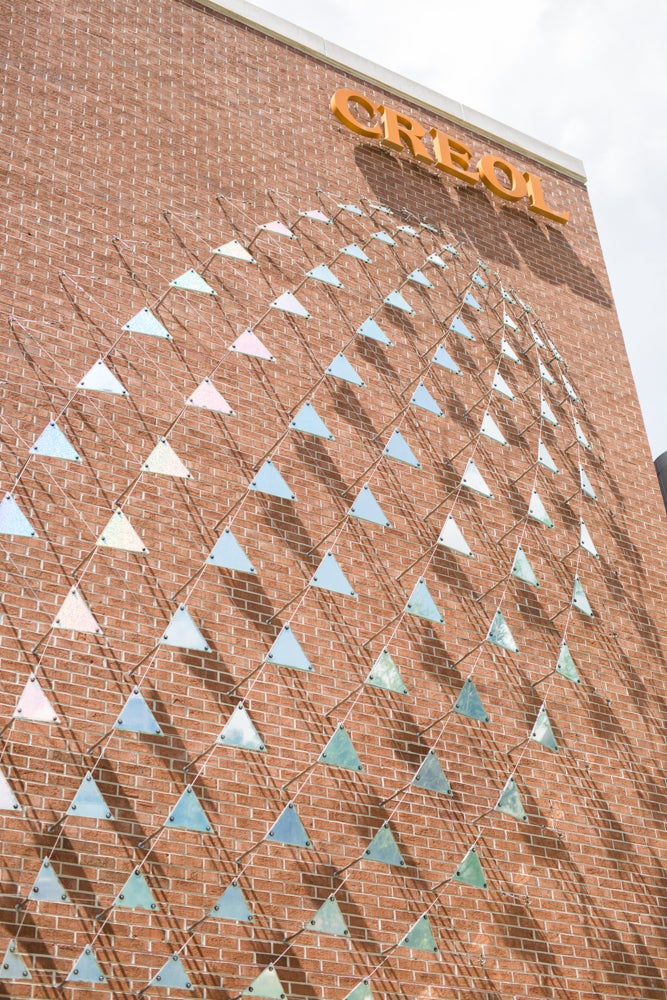
Elliptic Lens was specifically selected to serve as a landmark to the College of Optics and Photonics (CREOL) building because its use of technology reinforces the discipline taught in the building. The piece, located outside the main entrance, represents a lens by using triangular laminated glass facets that are graduated in size to mimic the swell of the lens shape. Refractive and reflective materials, such as holographic films and dichronic coatings, were used to cover the glass and cause the structure to change color depending on where it is viewed.
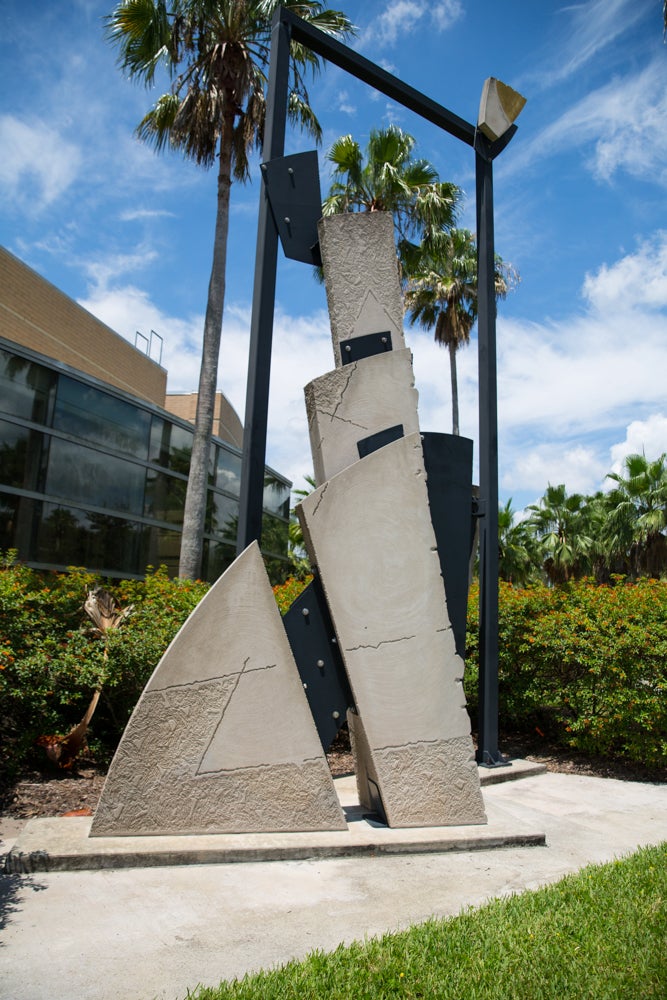
Since 2011, the 26-and-a-half-foot limestone structure that is Hermes Gate has towered over passersby near the Recreation and Wellness Center. The nonrepresentational form also utilizes man-made steel to emphasize the physical and symbolic strength of the piece, which draws from Greek mythology, as Hermes is the messenger of the gods and protector of sports and athletics.
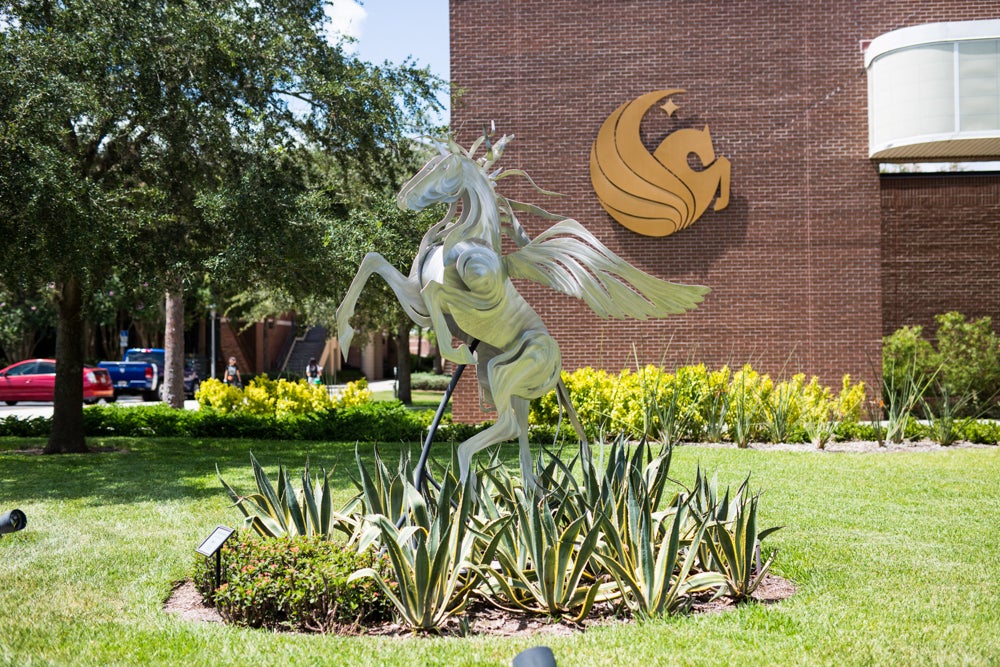
Wind Dancer, a whimsical, marine grade aluminum sculpture spans its wings outside the Burnett Honors College and is the only statue on campus depicting Pegasus, UCF’s official logo. With the help of Jeff Douglass ’02, UCF acquired the piece created by Mindy Colton ’96MA. In the fall of 2015, a group of engineering students used the Manufacturing Lab at the College of Engineering and Computer Science, which is the same lab Limbitless Solutions uses to create 3D printed arms for children, to repair the structure after it was vandalized.
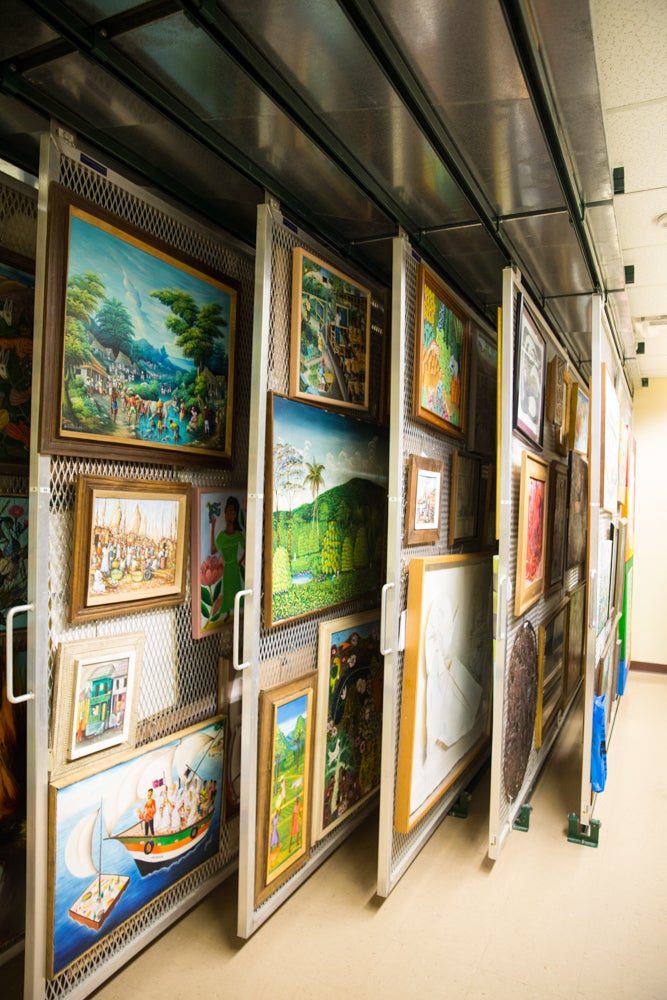
Special Collections and University Archives, located on the fifth floor of the John C. Hitt Library, uses museum-quality hanging racks, drawer storage, dehumidifiers and other methods to ensure all artwork and artifacts in their possession stay in great condition. “To me three-quarters of the battle with preservation is storage and handling, and we do a very good job of that,” Benjamin says. “We’re very careful with the art. We’ve started a program of doing condition reports for all the pieces. That’s something that museums do.”
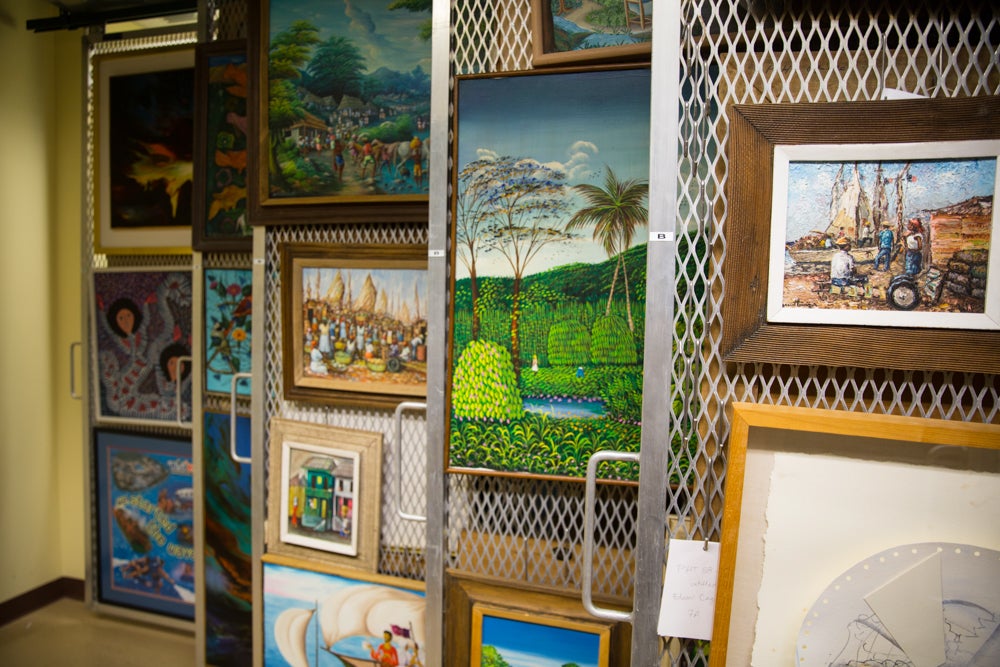
The Caribbean West Indies Collection makes up a large portion of the Special Collections and University Archives’ art works, with much of the art coming from Haiti. The collection is made up of maps, newspaper clippings, vinyl records, pottery, paintings and several other items documenting life on many Caribbean islands. Over the next year Benjamin will be working with an art history student to curate an exhibit that will highlight Haitian art and artists — from unknown street artists to renowned painters such as Edouard Duval Carrié.
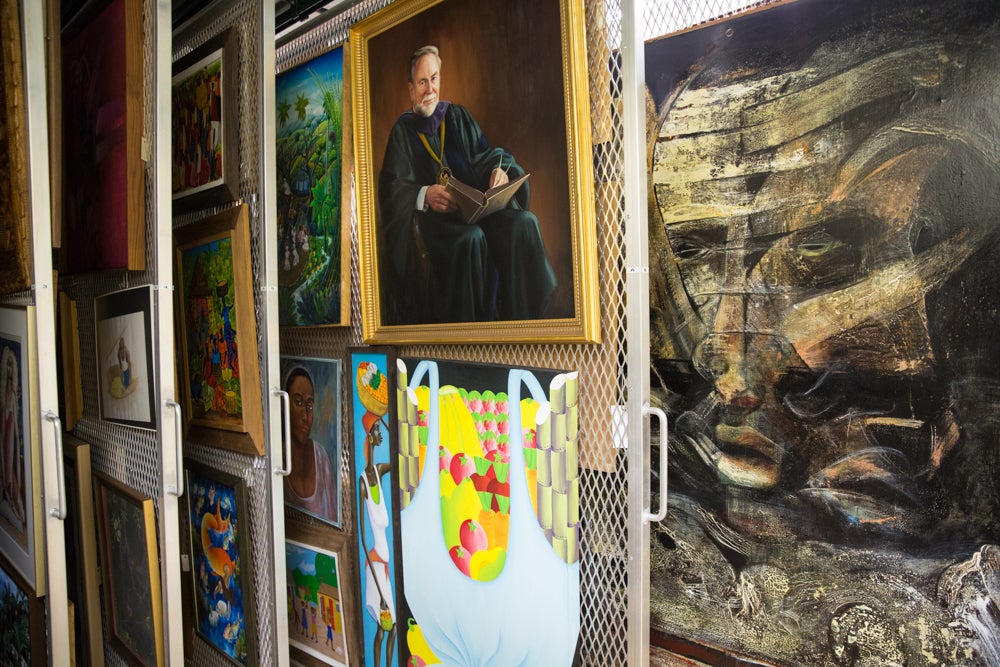
A portrait of Trevor Colbourn, who served as UCF President from 1978 to 1989, hangs with other paintings on a rack in the Special Collections and University Archives storage room. The painting is part of University Archives holdings, which document all aspects of UCF history and includes university publications and records of university offices and organizations as well as manuscript collections, audio and visual materials, published materials and ephemera related to the history of the university.

Recollections of a Cartoonist: The Glenn “Marty” Stein Collection of Cartoon Art, 1955–2013 is currently on display in the Special Collections and University Archives’ exhibit area located on the fifth floor of the John C. Hitt Library. The exhibit was curated from sketches, political cartoons, comics and other items created by Stein for three Orlando-based publications — the Orlando Business Journal, Apopka Chief and La Prensa — as well as early works and influences that helped him to develop his style.